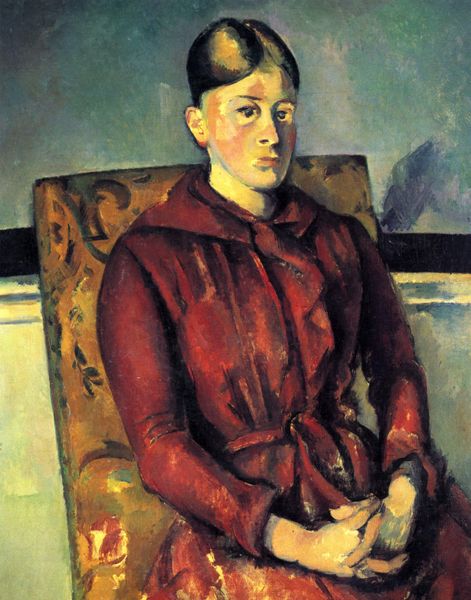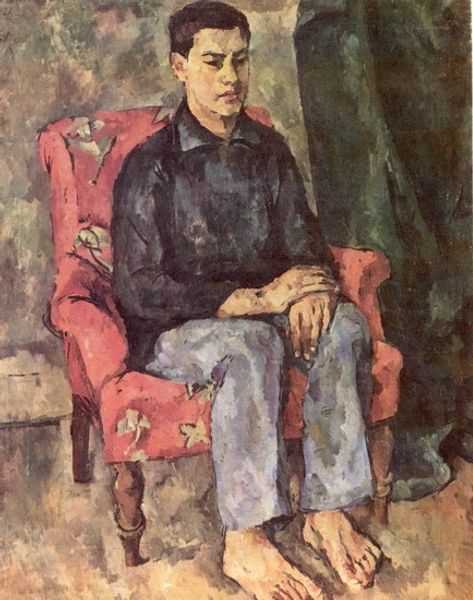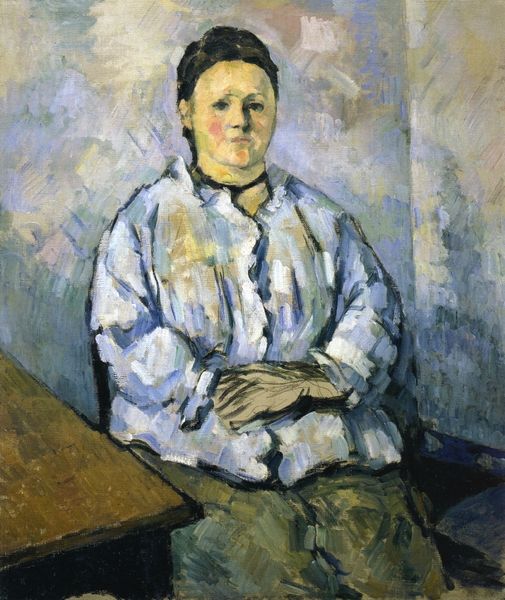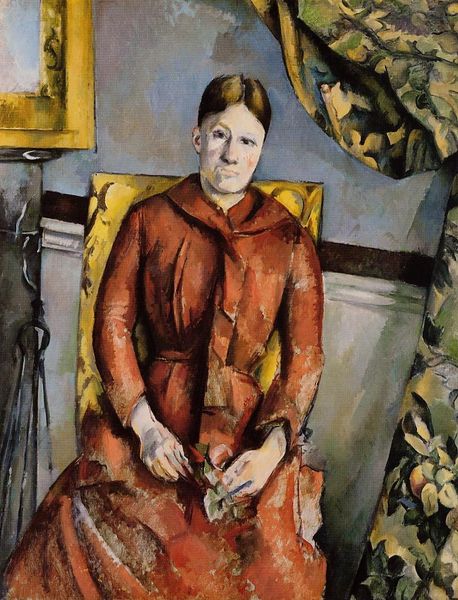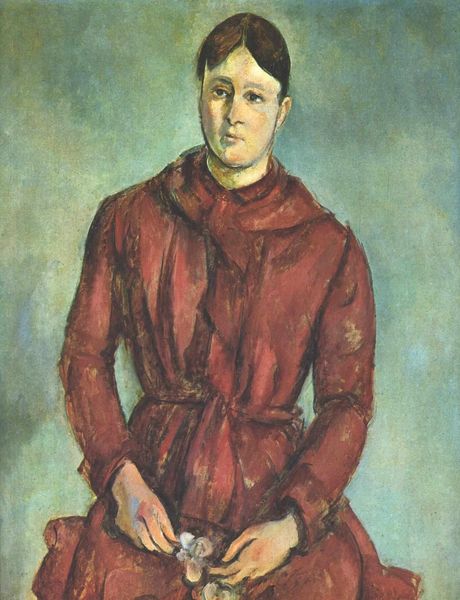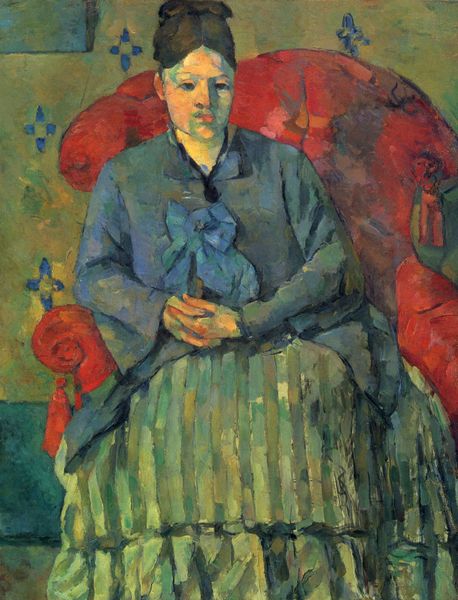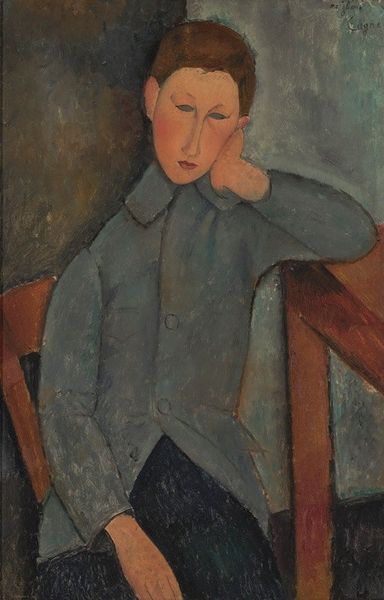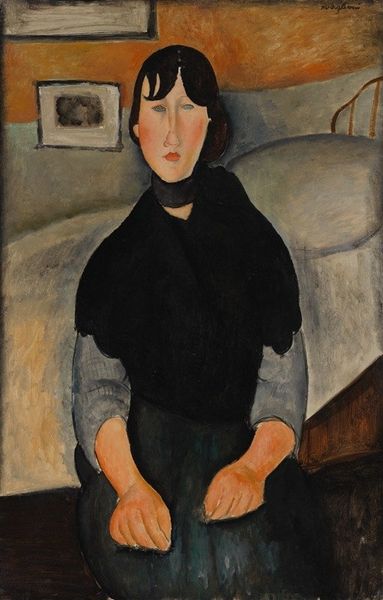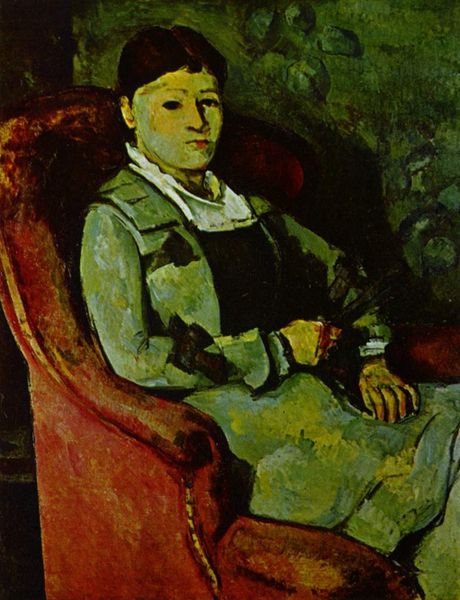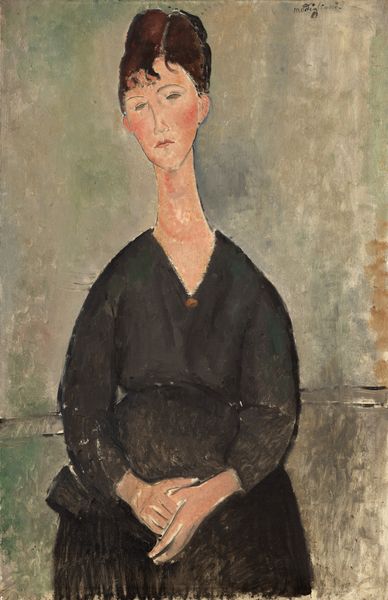
Copyright: Public domain
Paul Cézanne painted this portrait of his wife, Madame Cézanne in a Yellow Chair, using oil on canvas sometime in the late 19th century. Cézanne was working in France at a time when traditional artistic values were being questioned by a new generation of artists. The Académie des Beaux-Arts promoted historical and idealized subjects, while many artists were more interested in modern life. In Madame Cézanne in a Yellow Chair, the flattening of the picture plane and the simplification of forms are typical of Cézanne’s break with academic tradition. Cézanne's paintings were rejected numerous times by the Salon, the official art exhibition of the Académie des Beaux-Arts, before being championed by independent dealers and critics. Cézanne’s move away from institutional control was essential for the development of modern art. To understand this fully, we might look at exhibition records, critical reviews, and artists' letters. These resources help us to understand the social conditions in which art is made and the power of art to challenge existing social norms.
Comments
No comments
Be the first to comment and join the conversation on the ultimate creative platform.
